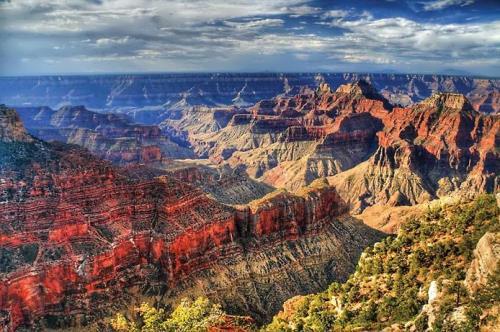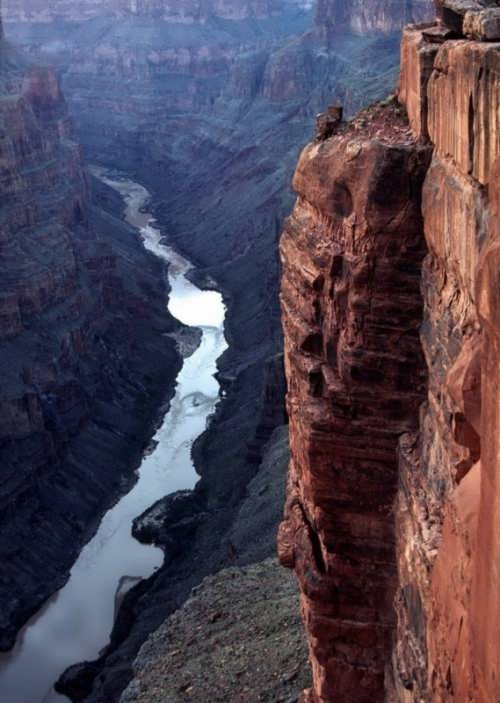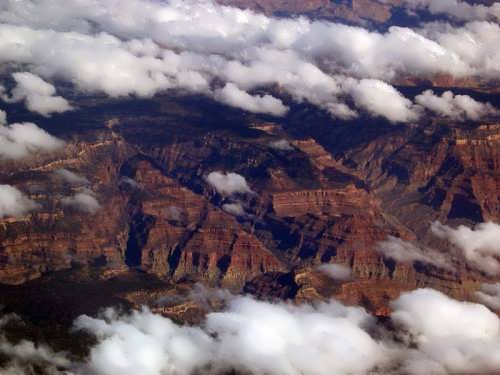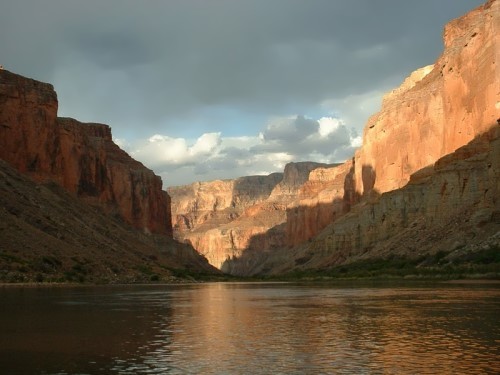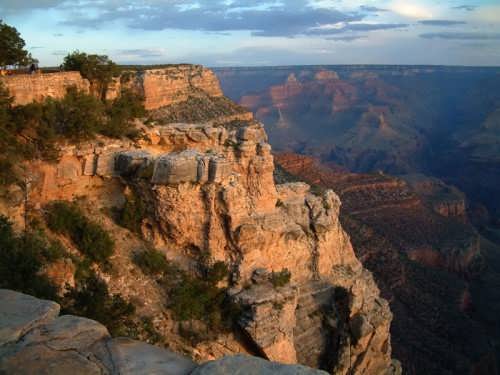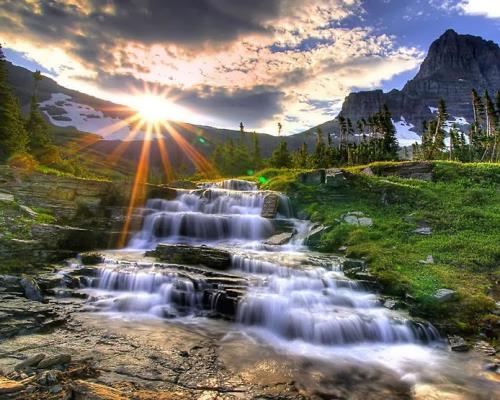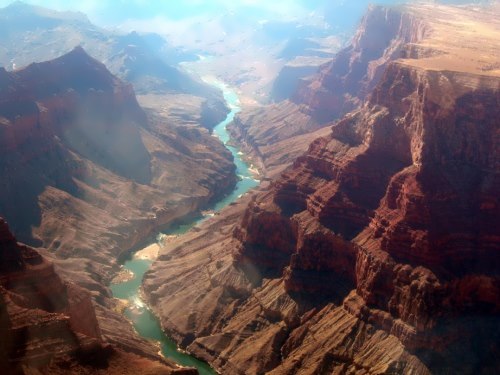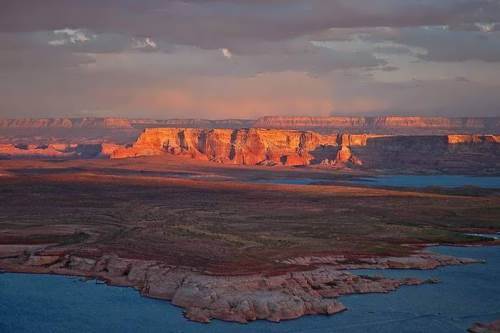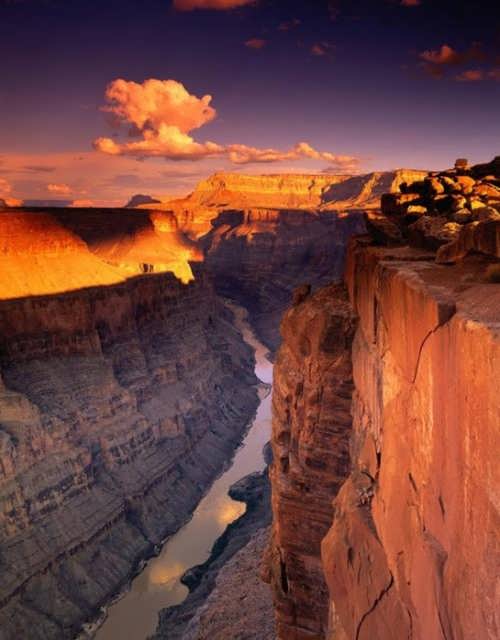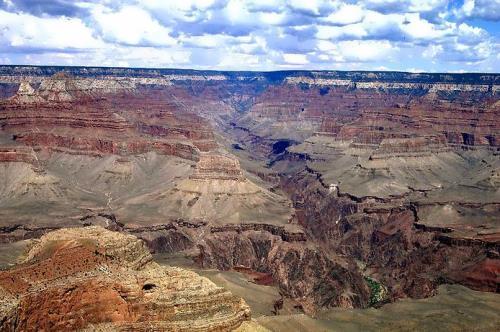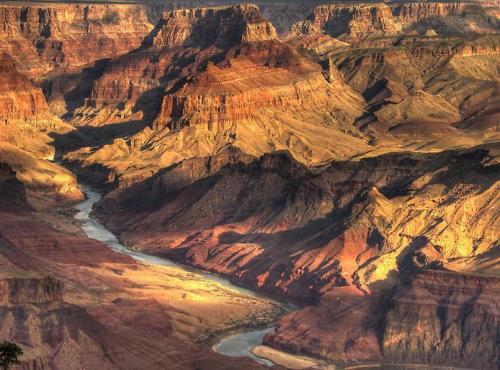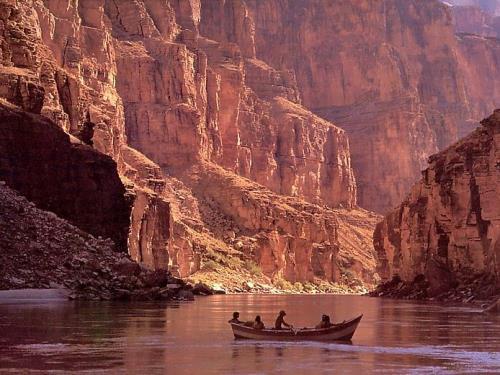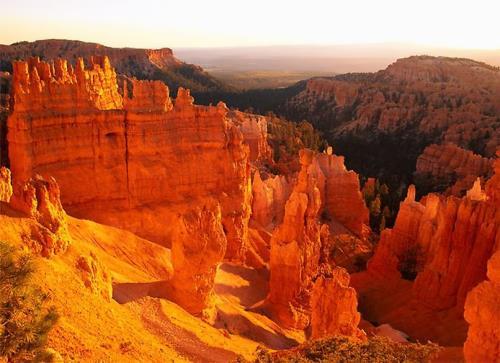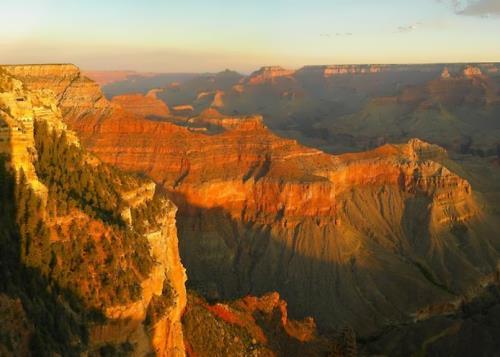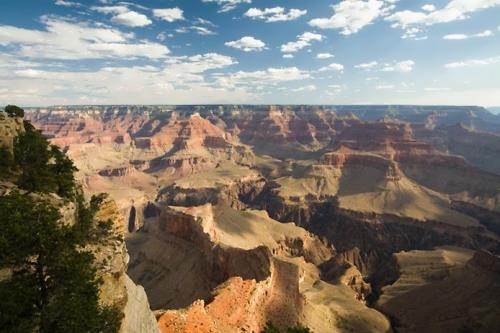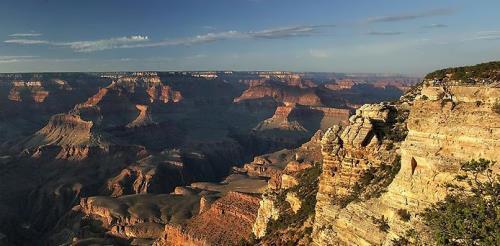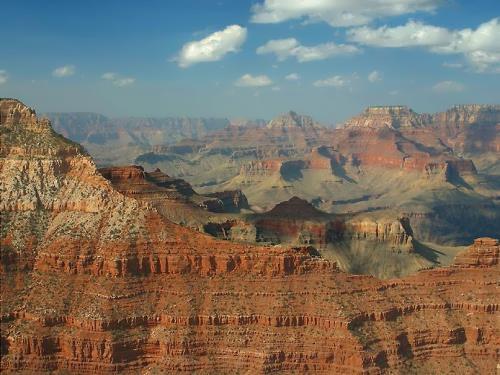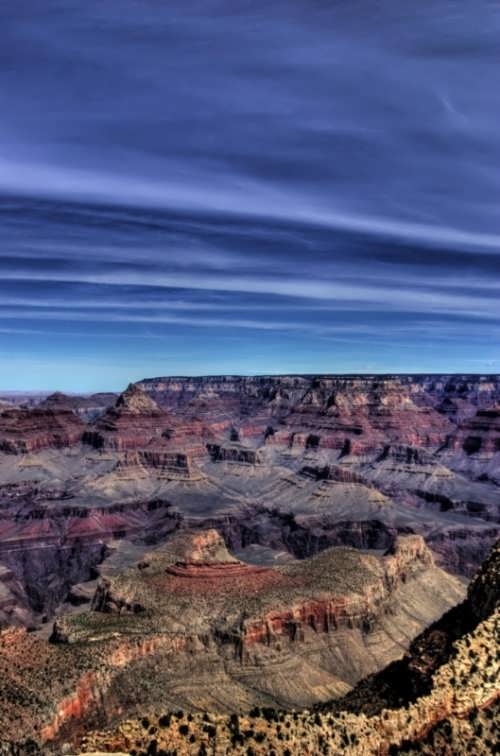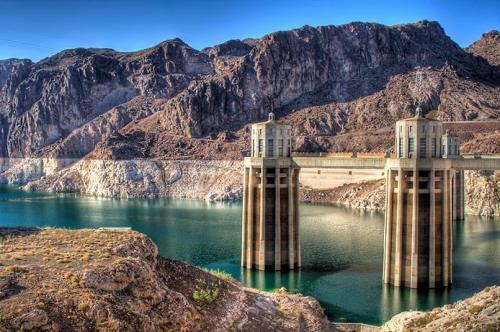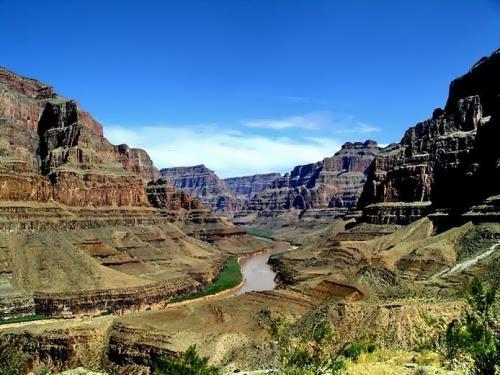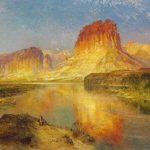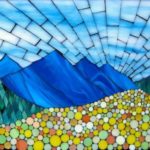Grand Canyon – Nature’s Masterpiece
The Grand Canyon is in northern Arizona in the United States. It is the most beautiful and spectacular canyon in the world. It is known for its fantastic shapes and colors. It is a natural symbol of North America. Each year, nearly 5 million people visit the Grand Canyon.
The word ‘canyon’ comes from the Spanish word cañón, which means ‘tube’.
The Grand Canyon is 446 kilometers long and about 0.2 to 29 kilometers wide. It has been carved by the Colorado River and stretches in a zigzag course. Wind and rain have helped the erosion process. Some of the rock towers look like castles and temples. The canyon is of different colors – red, yellow, gray, green, pink, and violet.
Many ancient pueblos in the canyon show that prehistoric peoples lived there. Some of the rocks in the Grand Canyon are 4 billion years old. Half of the Earth’s history is represented in the rocks at the Grand Canyon. Nowhere else in the world has been found a clearer view of geologic processes.
In 1540 the Grand Canyon was first discovered by Europeans. In 1908 President Theodore Roosevelt decided to protect it and the Grand Canyon was declared a national monument. And in 1919 it was established as a national park. In 1979 it was named a World Heritage site.
In fact, the Grand Canyon is neither the largest nor the deepest in the world. It is valued for its harmonious combination of size, depth and multi-colored layers of exposed rocks that were formed over millions of years of erosion. It is one of the most extraordinary places on our planet.
Grand Canyon National Park consists of several ecosystems: there are at least five forest areas and four deserts. The flora and fauna include 1500 species of plants, 355 species of birds, 89 species of mammals, 47 species of reptiles, 9 species of amphibians and 17 species of fish.
The famous Hoover Dam is considered one of the most beautiful dams ever built by man.
